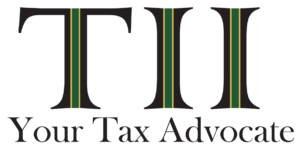About Qualified Opportunity Zone Funds
The Tax Cuts and Jobs Act (2017) established a tax rule that allows investors to defer their capital gains taxes by reinvesting their capital gains into qualified opportunity funds. It is meant to spur investment in undercapitalized communities. Any corporation or individual with capital gains can qualify. The program provides three tax benefits for investing unrealized capital gains in Opportunity Zones:
- Temporary deferral of taxes on previously earned capital gains. Investors can place existing assets with accumulated capital gains into Opportunity Funds. Those existing capital gains are not taxed until the end of 2026 or when the asset is disposed of.
- Basis step-up of previously earned capital gains invested. For capital gains placed in Opportunity Funds for at least 5 years, investors’ basis on the original investment increases by 10 percent. If invested for at least 7 years, investors’ basis on the original investment increases by 15 percent.
- Permanent exclusion of taxable income on new gains. For investments held for at least 10 years, investors pay no taxes on any capital gains produced through their investment in Opportunity Funds (the investment vehicle that invests in Opportunity Zones).
Potential Benefits of Opportunity Zone Projects
Depreciation Deductions
– Significant depreciation deductions over the life of the project
– Deductions generally equal 100% or more of investor cash investment within 5 years of the building being placed in service
– Deductions generally around 3X an investor cash investment over the depreciable life of the building (30 years)
Depreciation Losses
Losses generated by depreciation can shelter other sources of pass through income for investors on annual basis. Unused losses are also eligible to carry forward to future years.
Depreciation Recapture
OZ investors get the same tax benefits from depreciation as any other market-rate project through the life of the deal, however, OZ investors do not need to recapture the depreciation as additional gains on a sale if held for 10 years – presenting a huge tax savings benefit.
Deferral of Capital Gains
Any gain treated as a capital gain (including 1231 gains) generated from a sale can be deferred until December 31, 2026 by investing in a QOF. Examples of capital gains eligible for investment in a QOF are: sale of a business, stock sales, and real estate sales.
Tax Free Gain
If an Opportunity Zone (OZ) project is held for a minimum of 10 years, appreciation and gain on the project will be tax free.
Requirements for Qualified Opportunity Zone Funds
- Investors have 180 days to invest the gain in a QOF
- If the gains flow through a Partnership, S Corporation, RIC, or REIT, the shareholder has 180 days from the pass-through entity’s tax year-end
- If held personally, the investor has 180 days from the date of the sale that
triggered the gain - Taxpayers can elect to have the 180-day period begin on the due date of the flow through entity’s return (for calendar year partnership/S-corps, this is 3/15)
Sale of Asset
Realize capital gains from sale
of stock or property
2024
Invest into a Qualified Opportunity Fund
Years of Operations
Permanent exclusion of taxable income on new gains (ongoing)
2026
December 31, 2026 pay taxes on original differed capital gains
2033
